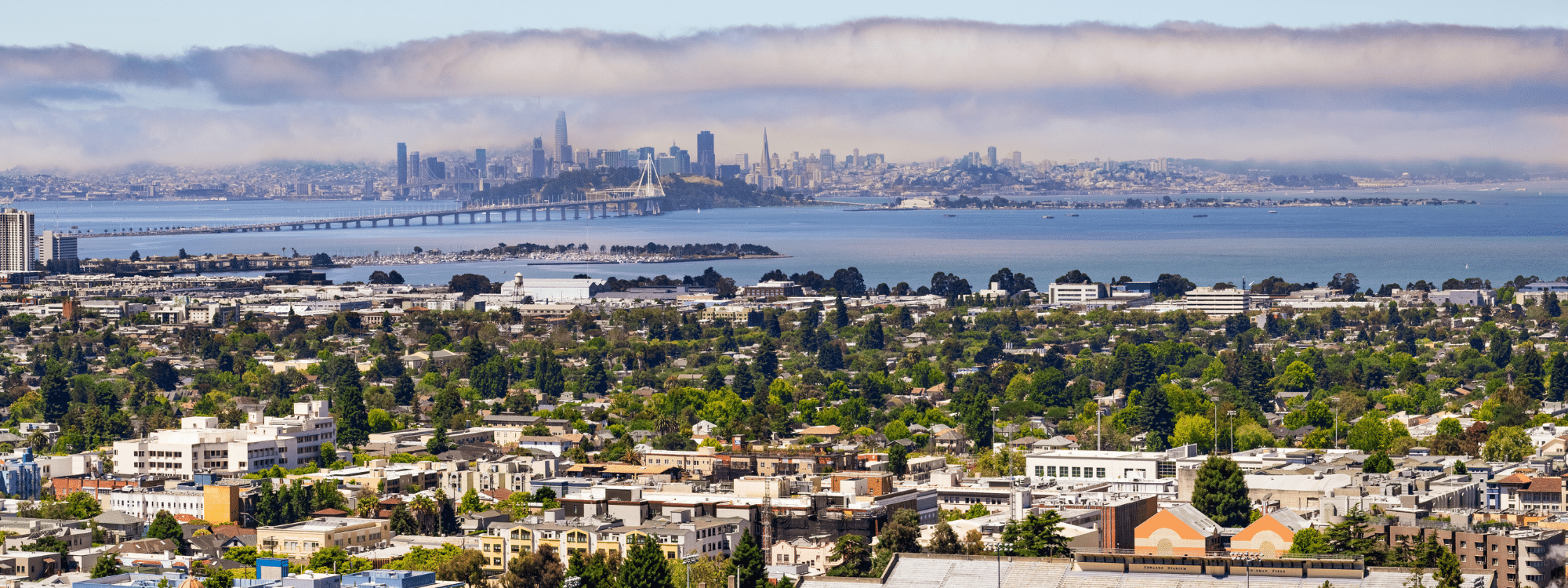A few weeks ago the Berkeley City Council unanimously approved a resolution calling for the end of exclusionary zoning by 2022. As a Berkeley native, I have attended countless City Council meetings over the last 20 years and seen more NIMBY (acronym that stands for Not In My Backyard) housing arguments than tie-dye stands left on Telegraph Avenue. This approval is significant for a city that has a long history of exclusionary zoning practices. Berkeley was one of the first cities in the US to enact single-family zoning in 1916 and today over 83% of residential land in Berkeley is zoned as single family. Berkeley is not alone. According to the New York Times, approximately 75% of residential land in cities across the country has this same zoning.
Adding density to single family neighborhoods is a powerful tool to address housing affordability, segregation, and reduce greenhouse gas emissions. To build the density that our region needs in order to address our housing, climate, and equity crises we need to change the stigma around multi-family home structures.
Dismantling Decades of Racial Discrimination through Zoning
Generations of racial disparities in wealth exacerbated by federally backed lending practices that discriminate against communities of color have resulted in the majority of single family homeowners being white. By making homeownership the only option for a neighborhood, you are significantly reducing the racial diversity, according to Jessica Trounstine, an Associate Professor of Political Science at the University of California, Merced, who has studied segregation. A study from the Othering & Belonging Institute at UC Berkeley found that as the percentage of single family zoning increases in a city, the percentage of white residents does as well. The 1926 ruling that created the basis for this type of zoning in America referred to apartments in a very negative light:
“… Very often the apartment house is a mere parasite, constructed in order to take advantage of the open spaces and attractive surroundings created by the residential character of the district. Moreover, the coming of one apartment house is followed by others, interfering by their height and bulk with the free circulation of air and monopolizing the rays of the sun which otherwise would fall upon the smaller homes, and bringing, as their necessary accompaniments, the disturbing noises incident to increased traffic and business, and the occupation, by means of moving and parked automobiles, of larger portions of the streets, thus detracting from their safety and depriving children of the privilege of quiet and open spaces for play, enjoyed by those in more favored localities — until, finally, the residential character of the neighborhood and its desirability as a place of detached residences are utterly destroyed.”
A century later not much has changed. Until now. The single family zoning reform wave is currently sweeping the Bay Area but we were by no means first. The State of Oregon recently passed a law that loosens single family zoning regulations and cities in Minnesota, Maryland and Virginia have also followed suit.
Now Is the Moment to End Exclusionary Zoning Practices Across the Bay Area
In January, Sacramento’s City Council passed a unanimous decision to allow up to four units on every residential lot. The San Jose task force voted last summer for the City to consider a similar upzoning, and South San Francisco’s City Council approved a plan to study the same type of change in February.
What Is Single Family Zoning?
Single family zoning requires that all housing built in a neighborhood zoned as such be detached single family homes. This is commonplace in suburbs but not unusual in urban areas. In San Francisco, for instance, 38%of residential land is zoned for single family. Here are a few reasons why we should continue this single family zoning reform wave:
- Eliminating single family zoning does not mean single family homes are prohibited. Rather, it provides the option for incremental density, like missing middle or 2-4 unit multi-family homes. It does not mean that skyscrapers will pop up next to suburban picket fences anytime soon.
- To address our climate crisis we need to build more homes in fire safe areas. Converting low-density development into medium-density development results in a reduction in greenhouse gas emissions. Infill housing is one of the biggest ways we can combat climate change and build healthy, resilient communities. Eliminating single family zoning can provide the option for incremental density like missing middle housing.
- It can help new households move into communities that are currently unavailable to them. By opening up the market and creating different price points for homes, students, young families, and residents of varying income levels can afford the elusive “American dream”.
How Will This Work?
The momentum for eliminating single family zoning is growing, but how will this play out across cities like Oakland and Berkeley that are fully built out and where vacant land is expensive? In a city like San Francisco where lot sizes are small, it is possible that getting rid of single family zoning would not make much of a difference, and there is still a lot of work that needs to be done in regards to permit streamlining for the building process. In the East Bay, lot sizes tend to be larger but permitting fees would make projects expensive—a cost that would then be passed on to tenants or owners. Once cities eliminate single family zoning, we need to work to streamline the permitting process and reduce the fees for multi-family homes. Together we can build the housing we need to create a healthier, more resilient Bay Area.





